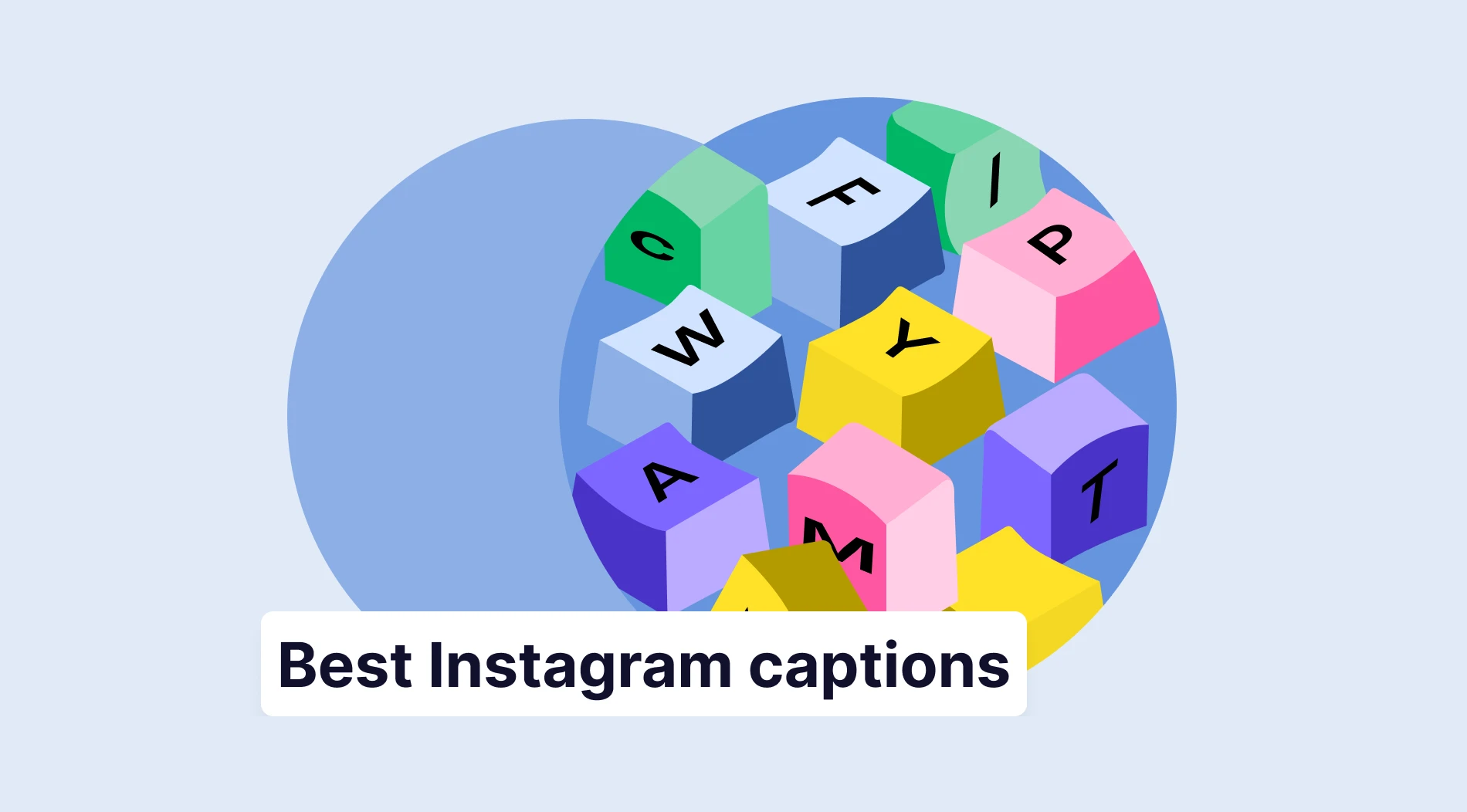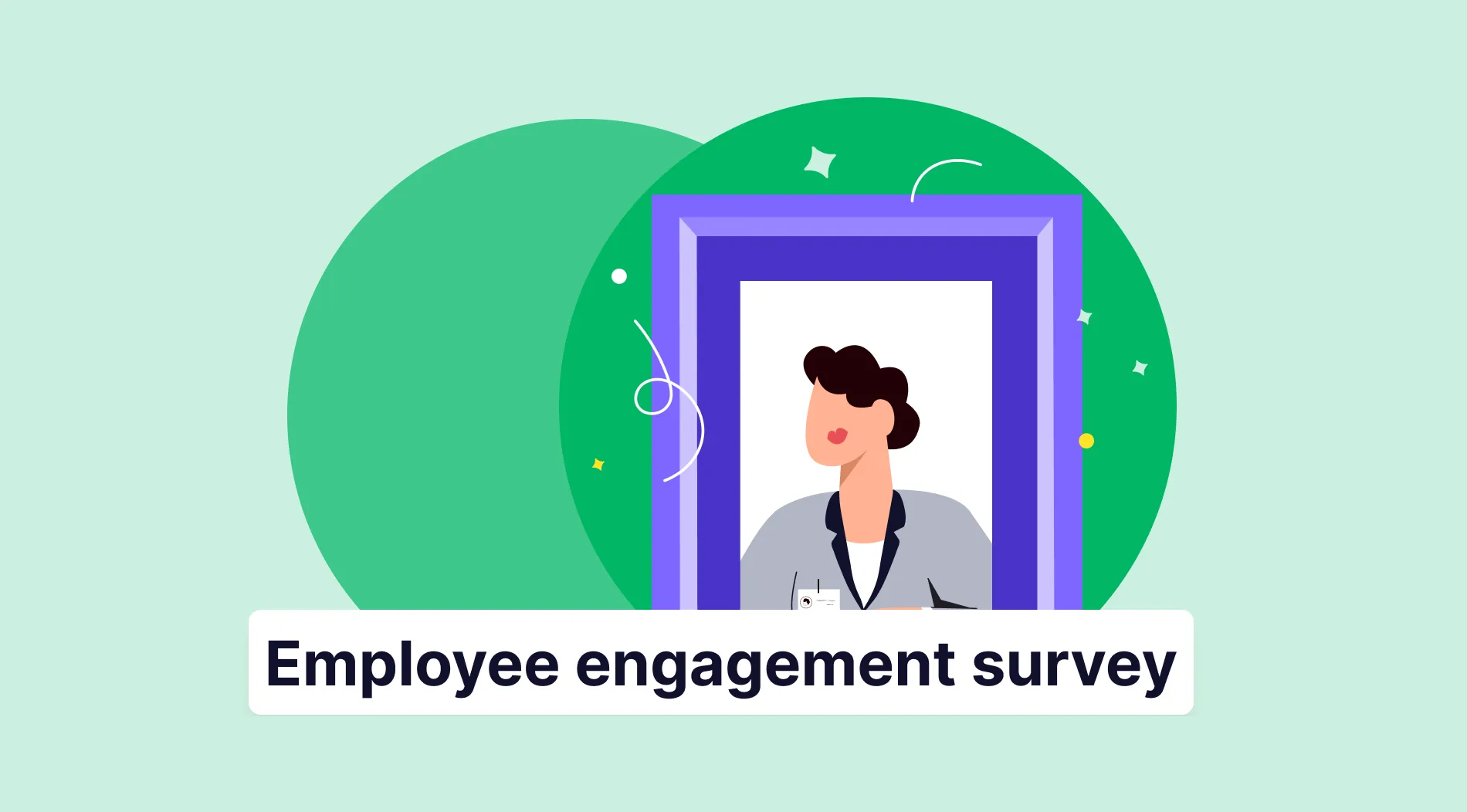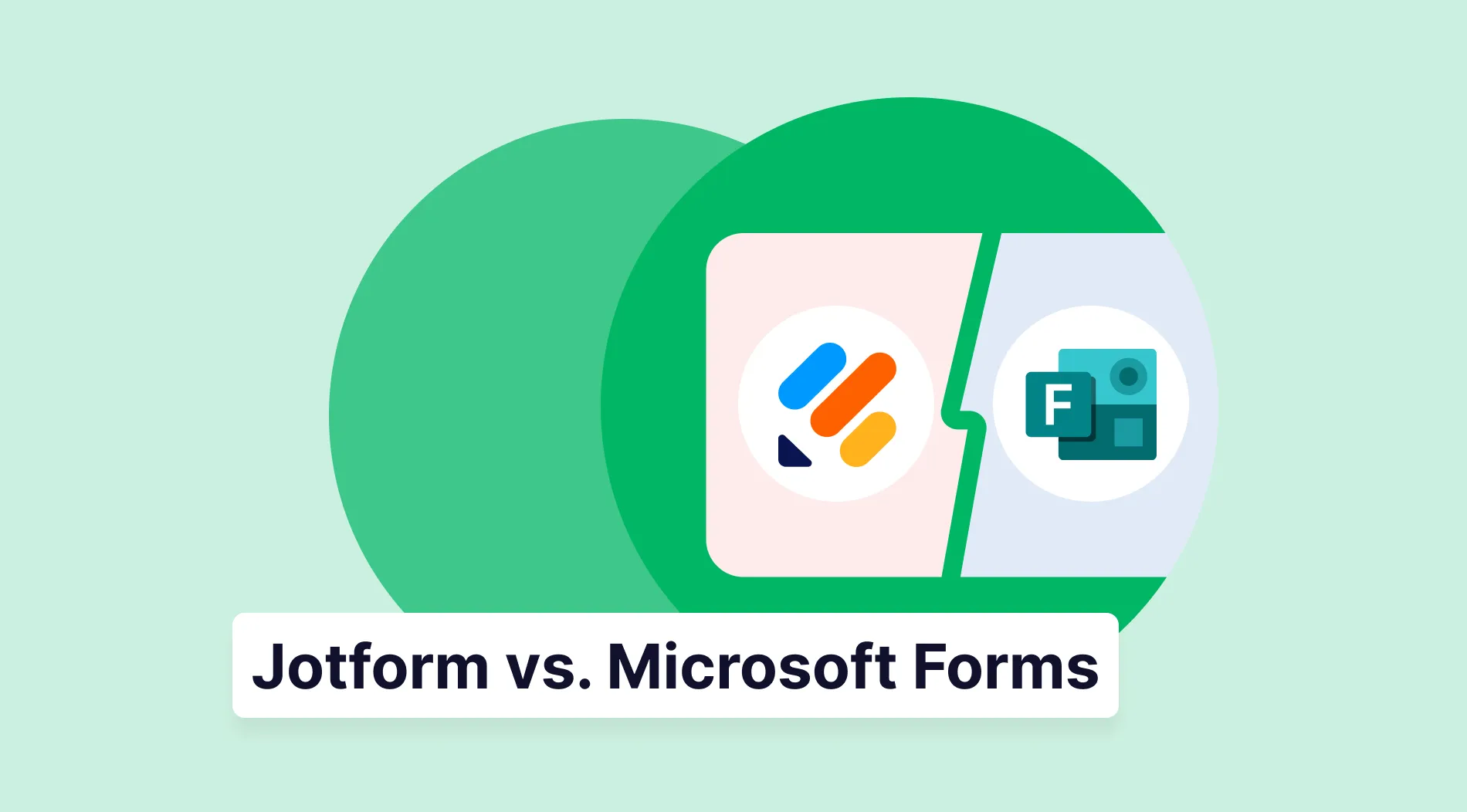When there is a need to gather data on a specific subject, there is more than one method to go with. Let us say you want to do general market research or you want to know how certain individuals react to a type of advertisement. You can do your secondary market research by conducting simple secondary research following pre-determined steps.
That means, instead of doing a study and extensive research to obtain information, you go through existing published documents and databases. That will help you save precious time, money, and workforce as you analyze different sources that can hand you the information. Let us find out more about secondary research and what is different from primary research.
Let’s start with the basics: What is secondary research?
Secondary research is a type of research where you gather the data collected by other researchers and educational institutions. Some examples of secondary research sources are books, academic journals, reports, online databases, and news articles.
When conducting secondary research, it is crucial to critically evaluate the quality and relevance of the sources used and to consider any potential biases or irrelevancies of the data. It may be faster and easier to obtain, but you also need to make sure the results are up-to-date and accurate.
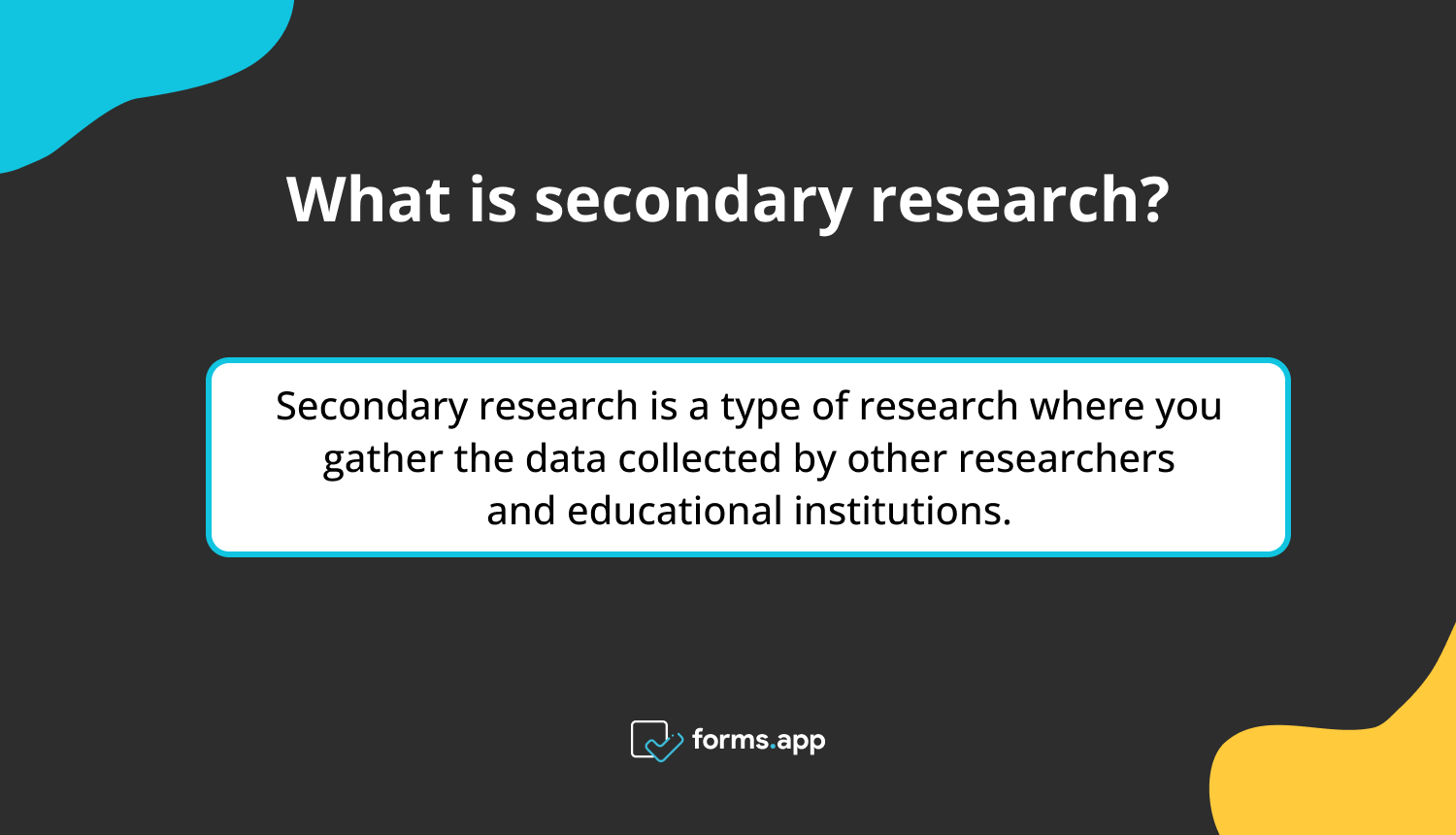
Primary vs. secondary research
Primary research and secondary research are two different types of research. The main difference is in the source you gather the information from. Basically, when you conduct primary research, you get the data from the primary sources directly. You conduct surveys, do interviews, and manage focus groups or observations to get the information you want.
On the other hand, secondary research gets information from different data sources. These sources can be published books, articles, reports, databases, or any other sources of pre-existing data.
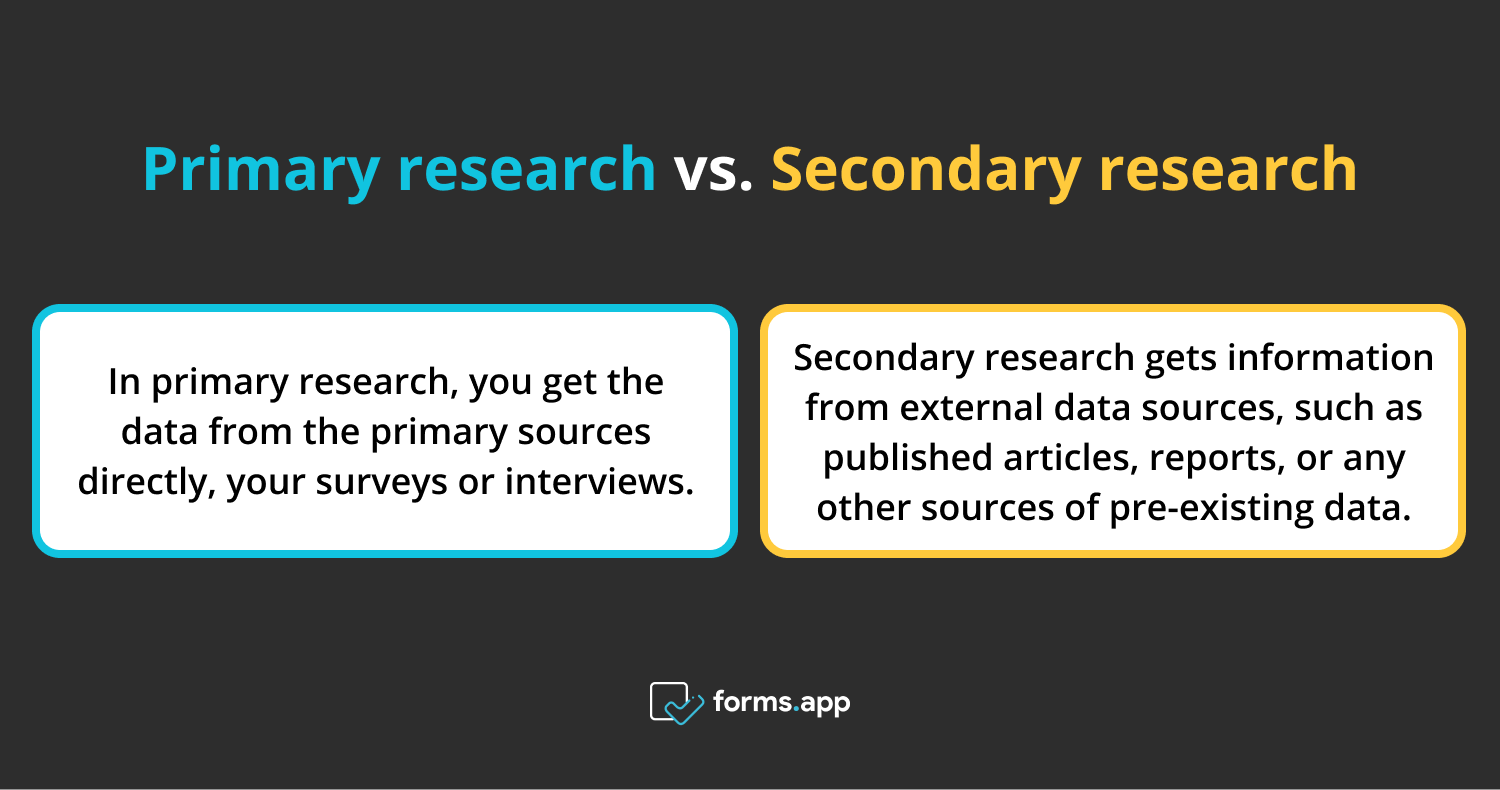
Primary research is more reliable, but it is more costly and time-consuming. And Secondary research may not provide as much accuracy, but it is cheaper, quicker, and requires fewer sources. So, the method you want to go with depends on your external sources and budget.
Secondary research methods (& examples)
Secondary research is a great way of gathering information when working on a budget. It allows you to analyze existing data. There are multiple methods you can use for your secondary research. Once you know what you want to determine from your research, you can go through possible methods to find the most suitable one. Now, let us see different secondary research methods and some examples to understand them better!
1 - Collecting data from the internet
Using the endless world of the internet is one of the most used methods. It allows expanding in different parts of the world from the comfort of your chair. There are many sources you can find that are free of charge or quite reasonable. However, you should always check the authenticity of the information to ensure they are accurate.
Example:
When you want to see the effect of different colors, placements, and keywords on your next big advertisement, you can go to Google Scholar and ResearchGate. They are two of the great sources that provide previous research and look up case studies. After looking up appropriate research done on the subject, you can conclude a final result.
2 - Reviewing of government publication
This method involves accessing and reviewing government publications, such as reports or statistics, that are publicly available. You may need to pay a sum to access these publications, or they may be classified information with no access to them. They allow you to get data on a big area of subjects.
Example:
Let us say you want to expand to a new region as a possible market, and you want to know details about the people living in the area. You can look up census details of the country or town. The sites you can search are U.S. Census Bureau or UK Office for National Statistics.
3 - Doing library research
This involves researching literature, reports, and other sources in a public or private library. Academic papers, business directories, newsletters, annual reports, and other similar documents are gathered and stored in libraries in both soft and hard copies.
Example:
When you want to see the historical views of people on a particular topic, you can conduct a literature review on the subject. For instance, if you choose a topic on sociology, you can gather all published documents on the subject of your choosing and get a result from them.
Key steps to conduct secondary research
Secondary research involves a systematic and thorough approach to gathering and analyzing data from existing sources. One should follow these effective steps to ensure that resources are being used most efficiently. After reviewing the sources and finding the material you are after, the results can be used in decision-making and support research objectives.
1 - Define your research question or problem
When you want to start your secondary research, the first step is clearly defining your research question or problem. That way, you can identify the key information you need to gather and the relevant sources to use.
2 - Identify relevant sources
Once you have determined your research question, you need to specify the relevant sources of data and information. This may include academic journals, books, government reports, industry publications, online databases, and news articles.
3 - Evaluate the quality of the sources
It is essential to check the quality of the sources you want to use to make sure that they are up-to-date, accurate, and relevant to your research. Look for reliable sources and consider factors such as the publication date, the author's credentials, and any potential biases.
4 - Collect and analyze the data
Once you have decided on the relevant sources to work with, you can start collecting the data. This may involve taking notes, summarizing key findings, and gathering the information to draw conclusions.
5 - Interpret the data
After collecting and analyzing the data, you need to interpret the findings and draw conclusions. Consider how the information relates to your research question, and identify any patterns, trends, or gaps in the data. You may create charts, graphs, or other visual aids to help you present the data in a clear way.
Advantages and disadvantages of secondary research
Now, we know the methods of secondary research and what exactly differentiates it from primary research. But what are the advantages and disadvantages of it? Firstly, secondary research is easily accessible as the data is already available and often involves a large sample size, which can increase the reliability and validity of the findings. Additionally, it is cost-effective and time-saving.
When it comes to the disadvantages of secondary research, the first thing that comes to mind is the fact that the data may not always be reliable, and credibility evaluation must be performed. In addition to this, even if the data is reliable, it may not be up to date. Outdated information may do more harm than good. Lastly, the original research could be biased, which would affect the result.
Conclusion
In conclusion, secondary research can be a useful tool for gathering information and insights for various research projects. It is an effective method of research that has its advantages. However, researchers should carefully evaluate the quality and relevance of the data and information gathered.
There are useful online applications that can help with projects and a great one of them is forms.app! forms.app is an all-in-one type online tool that can help with research purposes and much more. Be sure to check it out today!

